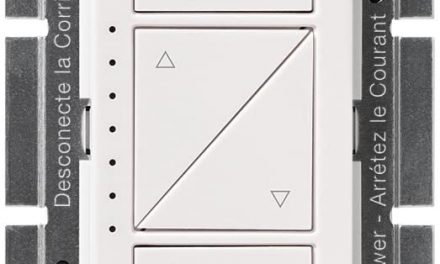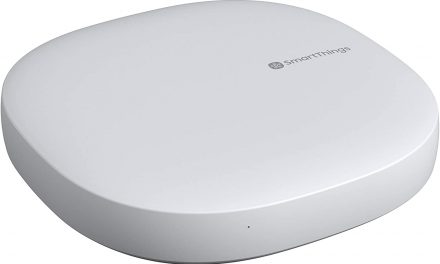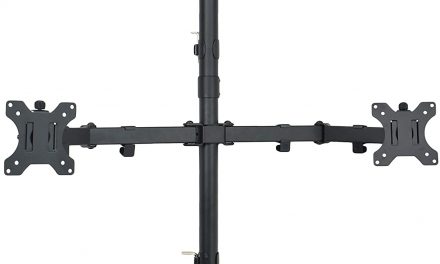The introduction of various wireless technologies has led to breakthroughs in various industries. In the Manufacturing industry, the plant supervisors are able to get real-time data generated by sensors that are connected to the company’s Wi-Fi network. In the home automation industry, devices such as smart home devices have been introduce that automate a wide variety of tasks ranging from cleaning right up to critical applications such as home security. The data generated by these home automation devices is then given to the user wirelessly over a network such as a Wi-Fi network. This article explores the differences between the Z-Wave and ZigBee technologies.
Table of Contents
Quick Comparison Table Z-Wave vs ZigBee
| Feature | Z-Wave | ZigBee |
| Network Type | Mesh network | Mesh network |
| Frequency Band | 800-900 MHz | 2.4 GHz |
| Data Rate | Up to 100 Kbps | 250Kbps |
| Range | 328 feet | 60 feet |
| Maximum hops between devices | 4 | No limit |
| Maximum number of devices in a network | 232 | 65,000 |
| Power Consumption | 1 mW | 100 mW |
| Cost | High | Low |
| Interoperability | Different manufacturers | Same manufacturer |
| Standards Body | Z-Wave Alliance, ITU | ZigBee Alliance, IEEE |
| Standard | Proprietary, owned by Sigma Designs | Open Source |
| Security | None (200 & 300 models) 128-bit AES encryption (400 series models) | 128-bit AES encryption |
Key Similarities between Z-Wave and ZigBee
- The key similarities between Z-Wave and ZigBee are the following:
- They both have a central hub
- They both have a mesh network setup
- They both support 128-bit AES encryption
- They are both wireless technologies
Key Differences between Z-Wave and ZigBee
- Range
- Operating frequency
- One is proprietary and the other is not
- Maximum hops between devices
- Interoperability
- Different data rates
A Thorough Comparison of Z-Wave and ZigBee
1. Operating Frequency
Z-Wave and ZigBee operate on different frequencies. The ZigBee operates on the 2.4GHz band. This is a disadvantage as this band is heavily congested. Wi-Fi devices, Bluetooth devices, Microwaves and even garage doors use this unlicensed band. This means that there will be a lot of congestion that will be present, and this will result in degraded performance if there are many devices competing for the same frequency. If there are not many devices that are competing for this band, then using ZigBee devices must be a seamless experience as it offers speeds of up to 250Kbps. This is more than enough for any typical ZigBee device.
Z-Wave standard operates on the 800-900 MHz band. This is an advantage as this this band is much less heavily congested. Devices such as microwaves, garage doors and smartphones use the 2.4 GHz band, and there is very little traffic in the 800-900 MHz band. This therefore means that using Z-Wave devices will offer the user a seamless experience as this band suffers from very little interference problems.
2. Operation in Different Countries
The ZigBee devices work on the unlicensed 2.4 GHz band. This means that many manufacturers are free to use this band. Several ZigBee devices are manufactured to operate in this band. The Z-Wave devices however use the 800-900 MHz band. The exact frequency used in each country is different. This means that if you buy a device in Canada, it is quite possible that it will not work here in the United States of America.
3. Range
The frequency of a signal is directly related to the distance that signal can travel. The lower the frequency of a signal, the longer the range. This can be seen in Z-Wave devices. These devices are able to reach a maximum distance of 328 feet. When Z-Wave devices are used indoors, they still perform quite well as the signals are able to penetrate through walls and other obstructions. The average range in doors is 50-60 feet.
The ZigBee protocol however users a higher frequency. This means that the signals can travel shorter distances. Two ZigBee devices can travel a maximum distance of 60 feet. When indoors, the range can drop right down to 10 feet. This technology is heavily affected by factors such as the materials your walls are made from s well as whether the devices have a clear line of sight or not.
4. Network Configuration
The Z-Wave and ZigBee protocols use the same network configuration. Most people are used to a star network. In such a network, the devices in the network communicate directly with the central hub. An example of this is a typical Wi-Fi network. In a typical Wi-Fi network, the devices in the network communicate with the central hub. The farther away the device gets from the hub, the poorer the signal gets, and the device eventually loses the connection. In a mesh network, this is different. Just like in a star network, the signal originates from the central hub. The key difference is that the devices that are present in the network do not need to communicate directly with the central hub. Mesh networks allow devices in the network to operate as repeaters. This allows them to pass the signal on to other devices in the network. This allows the mesh networks to be much more versatile than networks such as star networks. They can also cover much greater distances, and they can even work around obstacles.
It is also important to note that Z-Wave and ZigBee networks support a different number of hops. In a Z-Wave network, a maximum of four hops are allowed between the controller and the destination device. A ZigBee network does not have any limit to the number of hops.
5. Number of Devices Supported
The Z-Wave and ZigBee technologies both support adding multiple devices to the network. The difference comes with the exact number of devices supported. Z-Wave networks support up to 232 devices. A ZigBee network supports up to 65,000 devices in theory. Of course, it would be very difficult to get to that number and no average person would have a network with that many devices. Not even a typical small to medium business would have so many devices that would need to be connected to a network.
6. Power
Both Z-Wave and ZigBee use very little power. It is quite possible to run a device which uses a single coin cell battery for several years. This makes both these technologies quite popular for home automation applications. This is because there are some home automation applications in which it is either difficult to get access to hardwired power or it will be physically impossible to try and reconfigure the wired network to provide power to that home automation device.
The average Z-Wave device uses 1mW, and the average ZigBee device uses up to 100mW. This makes Z-Wave devices a better choice. It is important to note that other technologies such as Bluetooth and Wi-Fi use a lot more power than Z-Wave and ZigBee.
7. Interoperability
ZigBee is an open wireless standard. This standard is operated and maintained by the ZigBee alliance. This alliance is a group of companies that support its development and promote the use of this standard. This brings a problem as the certification process is rather loose.
There are two levels of certification, with one certifying the hardware and the other certifying the software. It is quite possible to have a product that is hardware certified but does not have a software certification. This results in the confusing scenario in which a product is given the “ZigBee Ready” label yet it will not be compatible with other ZigBee products. This has led to the standard getting a very bad reputation.
Z-Wave is quite different. This is a proprietary technology that is owned and maintained by Sigma Designs. It also runs the Z-Wave Alliance which is responsible for controlling the certification of all Z-Wave devices. This company comes with a very strict set of standards, and the company makes sure that every Z-Wave certified device complies with the standards present. This means that every Z-Wave device you buy is guaranteed to work with every Z-Wave controller available. In addition, it is against the law for products to use the Z-Wave logo without proper certification.
8. Security
Both the Z-Wave and ZigBee technologies come with encryption. They both use 128-bit AES encryption. This encryption standard is used in a wide variety of applications such as wireless security, processor security, file encryption and SSL/TLS. It is popular because it has proven to be very effective and efficient. It adds little to no noticeable difference in overhead for any process where this encryption standard is used. It is a fast and highly secure form of encryption that is a favorite of businesses and governments worldwide for encrypting sensitive information about their clients and citizens. This method of encryption is so secure that it is virtually unbreakable. This means that you do not need to worry about having criminals that will intercept your network and get access to your sensitive information.
9. Price
Devices that use both technologies have products with varying price points. The Z-Wave devices are generally slightly more expensive than the ZigBee devices. This is because of the better range, and superior performance that is offered by the Z-Wave technology.
10. Technology Advances
Both Z-Wave and ZigBee have seen advances in their core technology. ZigBee now has ZigBee 3.0. This is a protocol that has been designed and developed to facilitate the communication of data via noisy environments. These are quite common in both industrial and commercial application. It also unifies the market-specific application profiles. This allows devices to be connected wirelessly within the same ZigBee network regardless of the market function or designation of the device. In addition, ZigBee 3.0 has made an effort to address the interoperability problem as ZigBee 3.0 ensures the interoperability of products from a wide variety of manufacturers.
Z-Wave has introduced Z-Wave Plus. This has introduced a new host of features to the Z-Wave protocol. The range has been increased to 492 feet in clear air. There has been a 50% improvement in battery life which means your devices will last longer. There is 250% more bandwidth. There are three F channels for improved noise immunity and higher bandwidth. There are now Over The Air (OTA) firmware updates. The Z-Wave devices now have improved self-healing and fault tolerant features.
Examples of Devices Compatible with Z-Wave
- Wink
- Samsung SmartThings Hub
- HomeSeer Z-Wave WD200+ Dimmer
- Nest Learning Thermostat Gen 3
- Aeon Labs ZW056 Z-Wave Doorbell
- Zooz Zen 06 Z-Wave Smart Plug
- First Alert ZCombo Z-Wave Smoke & Carbon Monoxide Alarm
Examples of Devices Compatible with ZigBee
- Wink
- Immax Neo Smart Plug
- Schlage Connect Smart Deadbolt
- Elko Rotary Dimmer
- Elko Push Button Dimmer
- Samsung SmartThings Hub
- Centralite Azela In-Wall Dimmer
Factors to Consider When Choosing between Z-Wave and ZigBee devices
1. Price
The Z-Wave Devices are generally more expensive than the ZigBee devices. This means that if you are on a budget, you may want to consider going after the ZigBee devices that are available. If you are not on a tight budget, then feel free to explore the various Z-Wave and ZigBee devices and choose the one that best suits your needs.
2. Interoperability
You need to ask yourself where you are going to use the devices. Do you intend to move out of your current country anytime soon? If the answer is no, then feel free to use devices that use Z-Wave or ZigBee. If you do want to move out in less than a year, then I would suggest that you explore the various ZigBee devices that are available. This is because different countries have Z-Wave products with different frequency bands. You would not want to buy a product that is not compatible with your current Z-Wave system.
3. Range
This is the most important consideration of all. If you have a very large house, then buying the ZigBee devices may not be the best move you can make. This is because of the limited range that is offered by these devices, and when indoors they suffer heavily from obstructions such as walls. Z-Wave may be your best option since it has a much longer range than ZigBee. In addition, the introduction of Z-Wave plus increased the range even more, making it the most attractive option for those who want devices with the largest range possible.
4. Reliability
This is yet another important consideration. You need to ask yourself how critical the application of the device will be. For example, a security system will definitely be more critical than a door bell system. For critical applications, it is best to use Z-Wave. This is because it uses the 800-900 MHz range which is relatively uncongested. ZigBee uses the crowded 2.4 GHz frequency band, and this band suffers from interference from a wide variety of devices ranging from garage doors to microwaves.
5. Number of Devices
This is also another question that you need to ask yourself. You need to assess how many devices you would need. If you want to have multiple devices (more than 232), then go for ZigBee. If you want to have a few devices that are relatively far from each other, then Z-Wave will be your best option.
6. Device Support
This is the last thing to consider. You need to find out which devices you would want to use. For example, some smart hubs such as Samsung SmartThings support both Z-Wave and ZigBee. Some other devices only support one standard. This is a key point you need to look at before buying any Z-Wave or ZigBee products.
Conclusion
This article has explored the Z-Wave and the ZigBee wireless communication technologies. These technologies were given a thorough analysis, and the similarities as well as the differences between the technologies were brought out.
We hope you enjoyed the article.





